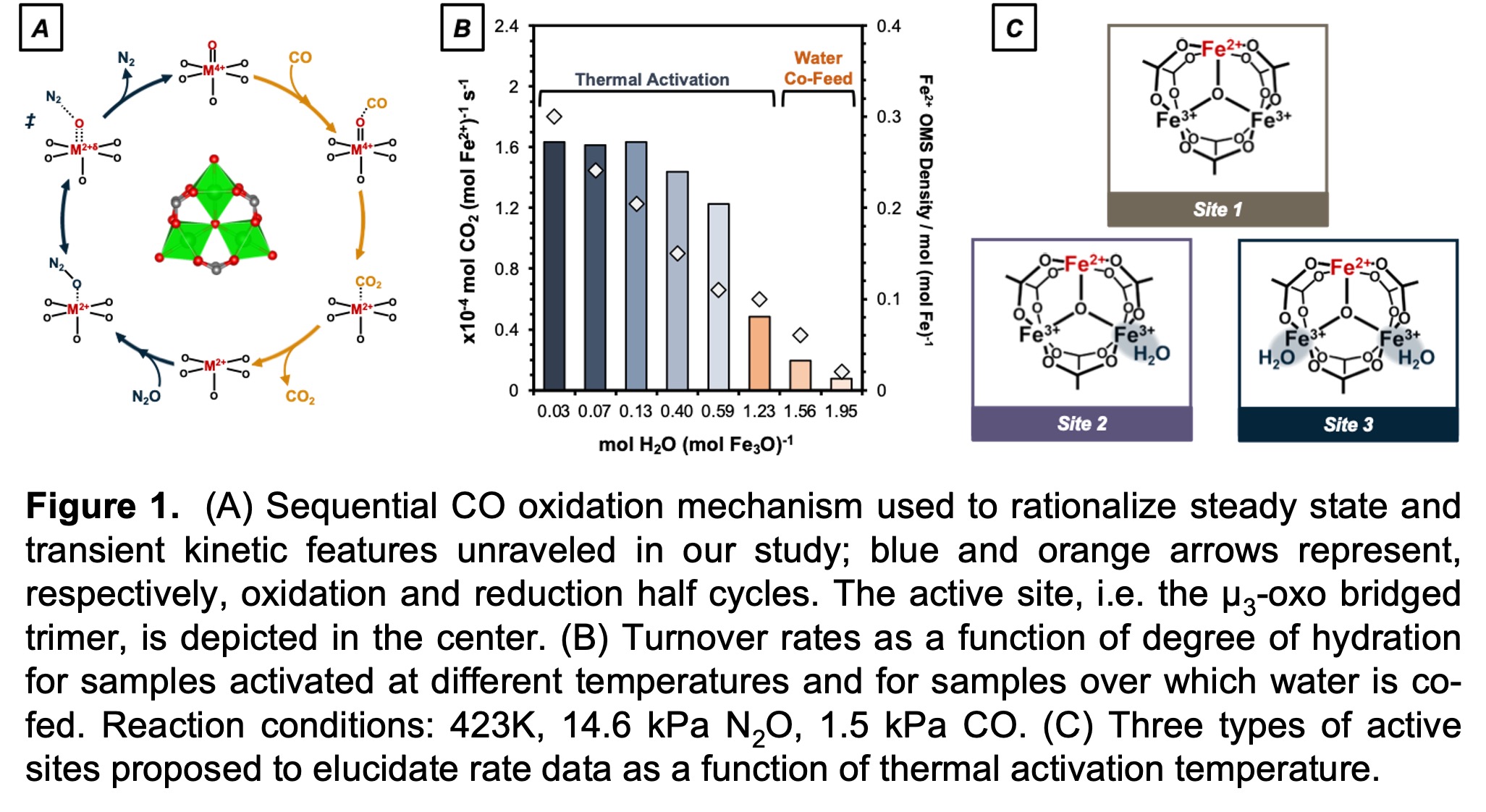Immobilization of active site moieties on heterogeneous catalyst surfaces, although enabling their use in large-scale industrial applications, almost invariably results in a
distribution of active site speciation. Quantitative methods for assessing site (non)uniformity, as opposed to distributions of kinetic properties that are instead oftentimes reported merely as ensemble averages, have clearly been lacking; using CO oxidation as a probe reaction, this talk will show how the application of MIL-100(Fe) - a metal-organic framework material (MOF) endowed with mixed-valent trinuclear metal nodes [M
2+(M
3+)
2O] [1] (Figure 1A) - exhibits a degree of uniformity sufficient to help unravel second sphere coordination effects in which ligand binding external to the primary coordination sphere of a metal atom alters reactivity even in the absence of direct binding interactions with the active site. A combination of kinetic, isotopic, titrative, and in-situ spectroscopic data indicate that the coordination environment of homogeneous μ
3-oxo complexes can be replicated over the
entirety of the active site pool of MIL-100(Fe), and that
indirect second sphere effects help alter free energies of kinetically relevant transition states.
Turnover rates and apparent activation energies were consistently found to decrease and increase, respectively, with the average moles of water adsorbed per node into the secondary coordination sphere of open-metal sites (Figure 1B). Ensemble-average rate data can be rigorously deconvoluted into individual rate contributions from nodes with three distinct degrees of hydration (Figure 1C), with reduced rates on partially water-covered beds changing non-linearly versus the fraction of sites titrated, consistent with disproportionate contributions (toward measured rates) of sites binding NO more strongly. These results point to the critical determinative role of second sphere coordination environment on kinetic parameters corresponding to oxidation and reduction half cycles.


